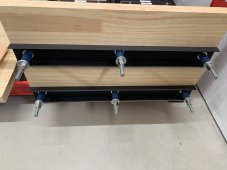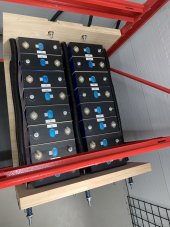Hey, I am currently awaiting X32 eve 280ah cells from Docan. I have gone down the rabbit hole of discussions as regard compression and went from a no compression stance to to prepping for a compression setup!
I was unsure whether to start a new thread or jump long train discussion post.
I have two questions that will likely not have absolute answers due to the nature of compression; however may help me decide.
Should I place my cells in their end point series configuration and purchase extended bus bars so as to connect them in parallel for the purpose of top balancing?
Ive read that if I top balance and then change the config there may be bulging. I read one or two posts that reducing to a certain SOC post top balance may relieve the bulge so as to remove the cells and change the cell orientation but ive couldn’t find the best SOC.
Compressing them once and for all and then adapting bus bars between series and parallel seemed safer
My second common question is tightness/torque/level of compression. I don’t have the tools/mathematical equations or scientific knowledge to calculate the compression accurately so just plan to do as others and go just beyond finger tight. I plan to place some Plastazote (closed cell foam) in-between each cell. Is there a ideal SOC level that I should tighten/compress the cells? Or am I overthinking it?
Thanks
I was unsure whether to start a new thread or jump long train discussion post.
I have two questions that will likely not have absolute answers due to the nature of compression; however may help me decide.
Should I place my cells in their end point series configuration and purchase extended bus bars so as to connect them in parallel for the purpose of top balancing?
Ive read that if I top balance and then change the config there may be bulging. I read one or two posts that reducing to a certain SOC post top balance may relieve the bulge so as to remove the cells and change the cell orientation but ive couldn’t find the best SOC.
Compressing them once and for all and then adapting bus bars between series and parallel seemed safer
My second common question is tightness/torque/level of compression. I don’t have the tools/mathematical equations or scientific knowledge to calculate the compression accurately so just plan to do as others and go just beyond finger tight. I plan to place some Plastazote (closed cell foam) in-between each cell. Is there a ideal SOC level that I should tighten/compress the cells? Or am I overthinking it?
Thanks






